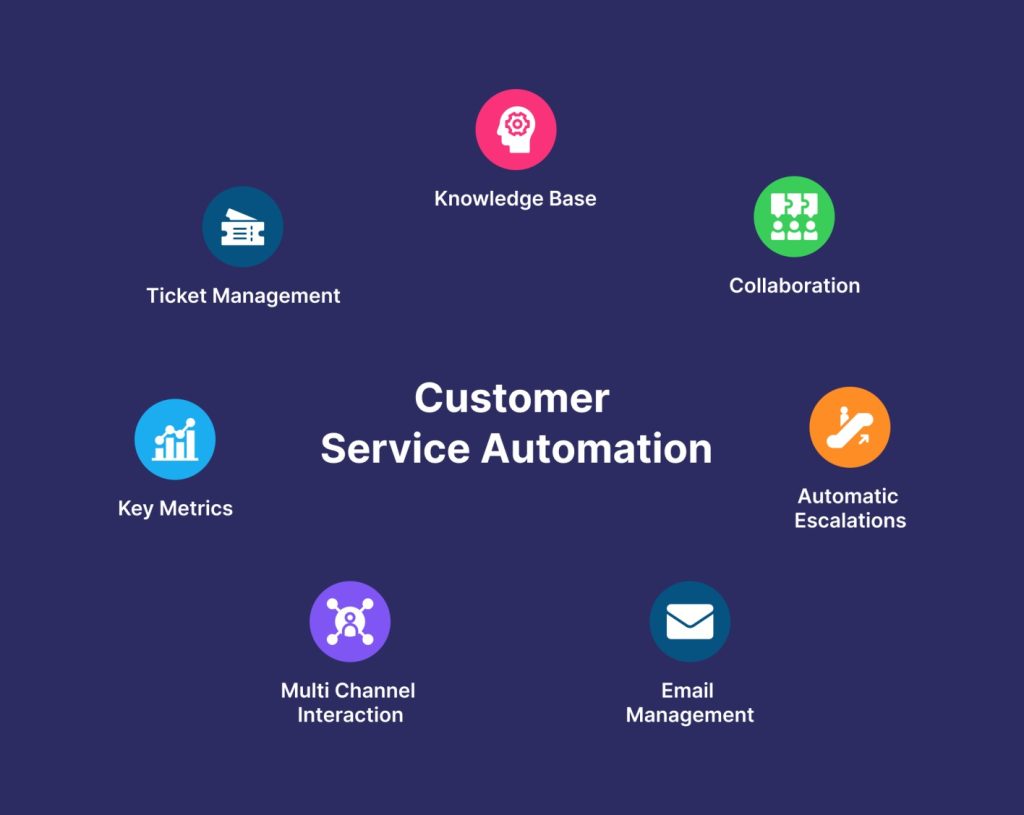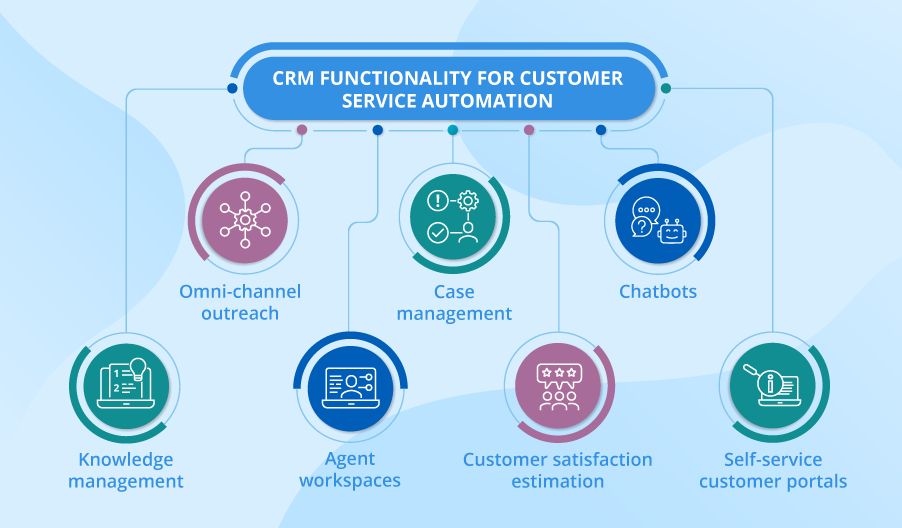In the fast-paced world of business, where customer expectations are soaring higher than ever, companies are turning to automation to streamline and enhance their customer service operations. The rise of technology has paved the way for innovative solutions that not only reduce costs and increase efficiency but also deliver a superior customer experience. This article explores the evolution of customer service automation, its benefits and challenges, the technologies driving it forward, and the future trends shaping the landscape.
Introduction
Customer service is the backbone of any successful business. It’s not just about resolving issues or answering queries; it’s about building relationships and fostering loyalty. In recent years, automation has emerged as a powerful tool to transform how companies engage with their customers. From chatbots to AI-driven analytics, automation is reshaping every aspect of customer service, promising faster response times, personalized interactions, and 24/7 availability.
The Evolution of Customer Service Automation

- From Call Centers to Omnichannel Support
- The traditional call center model has evolved into omnichannel support, encompassing phone, email, live chat, social media, and more.
- Automation has enabled seamless integration across these channels, ensuring a consistent experience for customers regardless of how they choose to interact.
- The Rise of Chatbots and Virtual Assistants
- Chatbots have become ubiquitous in customer service, providing instant responses to routine inquiries and freeing up human agents for more complex tasks.
- Virtual assistants powered by AI are capable of understanding natural language and delivering personalized recommendations, enhancing the overall customer experience.
- Analytics and Insights
- Automation tools gather and analyze vast amounts of customer data in real-time, providing valuable insights into consumer behavior, preferences, and pain points.
- These insights enable companies to anticipate customer needs, personalize interactions, and make data-driven decisions to improve service quality.
Benefits of Customer Service Automation
- Improved Efficiency and Cost Savings
- Automation reduces the workload on human agents, allowing them to focus on high-value tasks that require human intervention.
- It leads to significant cost savings by lowering the need for extensive manpower while increasing operational efficiency.
- Enhanced Customer Experience
- Automation ensures quicker response times and round-the-clock availability, meeting the expectations of today’s always-on consumers.
- Personalization through AI-driven recommendations and proactive engagement fosters a deeper connection with customers.
- Scalability and Consistency
- Automated systems can handle a high volume of inquiries simultaneously without compromising on quality, ensuring consistent service delivery even during peak times.
- Scalability allows businesses to expand operations seamlessly without the need for proportionate increases in customer service resources.
Challenges and Considerations
- Integration Complexity
- Integrating automation tools with existing systems and platforms can be complex and may require significant upfront investment in technology and infrastructure.
- Compatibility issues and the need for customization to align with specific business processes can pose challenges.
- Maintaining Human Touch
- While automation enhances efficiency, maintaining a balance between automated interactions and human empathy is crucial to avoid alienating customers.
- Certain situations still require human intervention, especially in handling complex issues or sensitive customer concerns.
- Data Privacy and Security
- Handling sensitive customer data raises concerns about privacy and security.
- Companies must implement robust security measures and comply with data protection regulations to safeguard customer information.
Technologies Driving Customer Service Automation
- Artificial Intelligence (AI) and Machine Learning
- AI-powered algorithms enable chatbots and virtual assistants to understand and respond to customer queries with increasing accuracy.
- Machine learning algorithms continuously improve based on data feedback, enhancing the capabilities of automated systems over time.
- Natural Language Processing (NLP)
- NLP algorithms analyze and interpret human language, allowing chatbots to engage in natural conversations and understand context.
- Sentiment analysis tools gauge customer emotions and sentiments, enabling personalized responses and proactive customer service.
- Robotic Process Automation (RPA)
- RPA automates repetitive tasks and workflows, such as data entry and order processing, reducing human error and enhancing operational efficiency.
- It integrates with existing IT systems to automate backend processes, improving overall service delivery.
Future Trends in Customer Service Automation

- Hyper-Personalization
- AI-driven analytics will enable hyper-personalized customer interactions based on individual preferences, behaviors, and past interactions.
- Predictive analytics will anticipate customer needs before they arise, providing proactive solutions and recommendations.
- Voice-Activated Assistance
- Voice-enabled AI assistants will become more prevalent, allowing customers to interact through voice commands for a more intuitive and hands-free experience.
- Integration with smart home devices and IoT (Internet of Things) will further enhance accessibility and convenience.
- Blockchain for Transparency
- Blockchain technology will enhance trust and transparency in customer service by securely managing customer data and transaction histories.
- It will streamline dispute resolution processes and ensure data authenticity and integrity.
FAQs on Customer Service Automation
1. What is customer service automation? Customer service automation refers to the use of technology and automated systems to streamline and enhance the process of customer support. It includes tools like chatbots, AI-powered virtual assistants, and automated workflows that handle tasks such as answering inquiries, resolving issues, and providing information to customers.
2. What are the benefits of customer service automation?
- Improved Efficiency: Automation reduces response times and handles a large volume of inquiries simultaneously, improving overall efficiency.
- Cost Savings: By automating routine tasks, businesses can lower operational costs associated with customer service.
- Enhanced Customer Experience: Automation enables 24/7 availability, quicker responses, and personalized interactions, leading to higher customer satisfaction.
- Scalability: Automated systems can scale operations seamlessly to accommodate growth without proportionate increases in resources.
3. What technologies are driving customer service automation?
- Artificial Intelligence (AI): Powers chatbots and virtual assistants to understand and respond to customer queries intelligently.
- Machine Learning: Improves automation systems over time by learning from data and customer interactions.
- Natural Language Processing (NLP): Enables automated systems to understand and respond to natural language queries.
- Robotic Process Automation (RPA): Automates repetitive tasks and workflows, enhancing operational efficiency.
4. How does customer service automation impact customer experience?
- Automation ensures faster response times and round-the-clock availability, meeting modern consumer expectations.
- Personalization through AI-driven recommendations and proactive engagement fosters a deeper connection with customers.
- It frees up human agents to focus on complex issues that require empathy and critical thinking, thereby improving overall service quality.
5. What are the challenges of implementing customer service automation?
- Integration Complexity: Integrating automation tools with existing systems can be complex and may require significant investment.
- Maintaining Human Touch: Balancing automated interactions with human empathy is crucial to avoid alienating customers.
- Data Privacy and Security: Handling sensitive customer data raises concerns about privacy and security, requiring robust measures to protect information.
6. Will customer service automation replace human agents? Customer service automation is designed to augment human agents, not replace them. While automation handles routine inquiries and tasks, human agents are essential for complex issues, emotional support, and building customer relationships that require empathy and understanding.
7. How can businesses ensure successful customer service automation?
- Plan Carefully: Define clear objectives and choose automation tools that align with business goals.
- Integrate Seamlessly: Ensure smooth integration with existing systems and platforms to avoid disruptions.
- Monitor and Improve: Continuously monitor performance metrics and gather customer feedback to refine and improve automated systems over time.
- Train Employees: Provide training to human agents to work effectively alongside automated systems and handle escalated issues.
8. What are some examples of customer service automation in practice?
- Chatbots: Used on websites and messaging platforms to provide instant responses to customer queries.
- AI-Powered Virtual Assistants: Offer personalized recommendations and assistance through voice commands or text-based interactions.
- Automated Email Responses: Send automated replies to customer emails based on predefined criteria.
- Self-Service Portals: Enable customers to find information, track orders, and resolve issues independently.
9. How can customer service automation contribute to business growth?
- By improving efficiency and reducing operational costs, automation allows businesses to allocate resources more effectively.
- Enhanced customer experience leads to increased customer satisfaction, loyalty, and positive word-of-mouth referrals.
- Scalability enables businesses to expand operations without a proportional increase in customer service resources.
10. What does the future hold for customer service automation?
- Continued advancements in AI, machine learning, and NLP will enable more sophisticated automation capabilities.
- Hyper-personalization based on real-time data analytics will become standard, offering highly tailored customer interactions.
- Integration with emerging technologies like blockchain and IoT will further enhance security, transparency, and convenience in customer service interactions.






